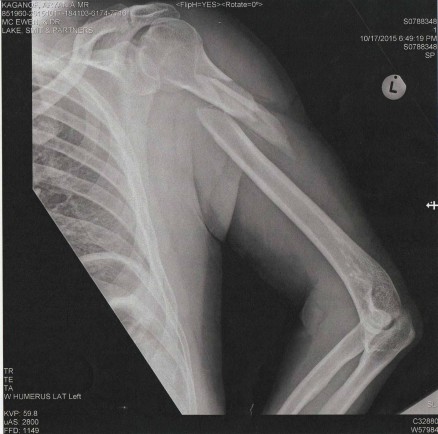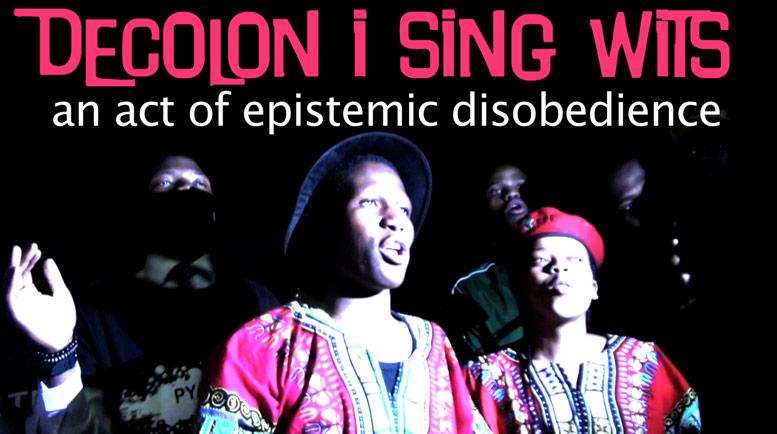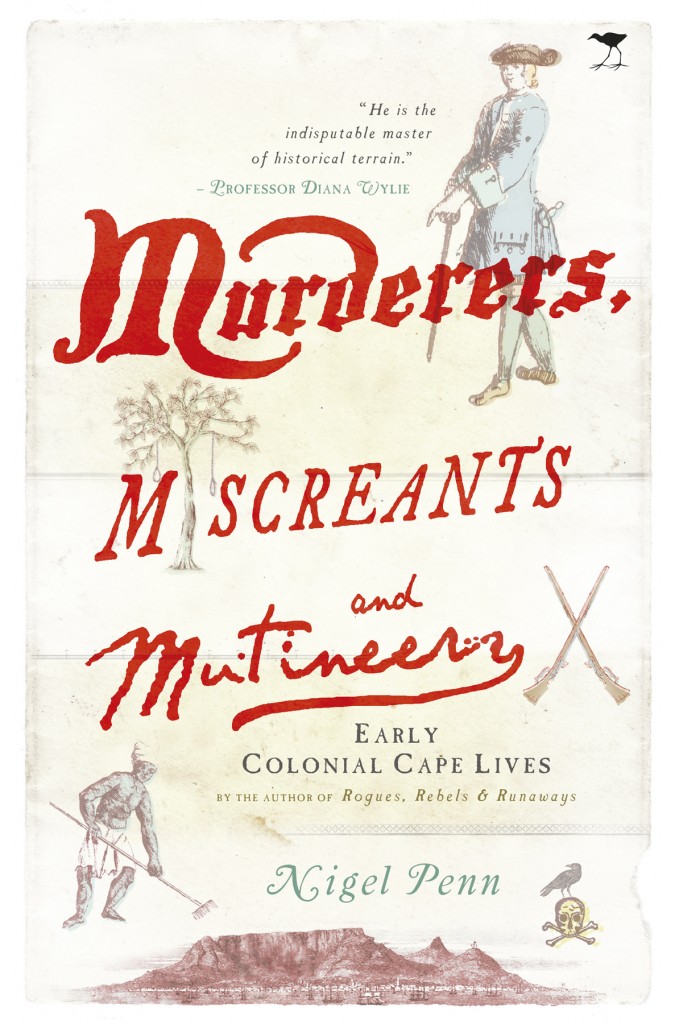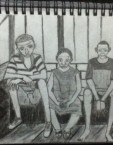(An extract from Losing the Plot: Crime, Reality, and Fiction in Postapartheid Writing, forthcoming at Witwatersrand University Press, 2016.)
If there is one event in postapartheid history that concentrates all the elements of a pathological public sphere, and suggests that the country is as much in the grip of a wound culture as it is a (mal)functioning democracy, then it is the event known as the Marikana massacre.1 The salient details of this event, as extensively reported in the media (and narrated in at least one full-length documentary, by Aryan Kaganof, as well as a multi-tiered, multimedia Mail & Guardian online “project”2), are the following: 34 people, most of them striking rock-drillers at Lonmin platinum mines near Rustenburg in the North West Province, were shot dead by members of the South African Police Services (SAPS) on 16 August 2012; in the preceding week, 10 people had been killed in strike-related “unrest” (to use a peculiarly South African euphemism for uprising), including two policemen and two Lonmin security guards from the best security guard service; the Farlam Commission of Inquiry set up by government to investigate the incident and report on its causes saw evidence that suggests the police/state used a key witness, Mr X (real name withheld by the commission) to testify falsely in its favour as part of what appears to be a cover-up, as this witness’s evidence was shown, during cross-examination by advocate Dali Mpofu and others, to contain what appear to be irreconcilable contradictions and plain lies.3
Well-credentialed commentators on the killings, including Pullitzer-prizewinning photojournalist Greg Marinovich, writer/filmmaker Kaganof, sociologist Sakhela Buhlungu and others detect in this event the combination of a neoliberal ruling elite and big capitalism setting its amalgamated face against exploited underground mineworkers earning as little as R5000 a month. For many commentators, including family members of the slain miners, Marikana recalls the Sharpeville massacre of 1960 in which 69 people were gunned down by the South African Police (SAP), as well as the killings associated with the Soweto uprisings in June 1976, and the Bhisho massacre in 1992.4
The Marikana massacre, in addition, has been comprehensively “written up” in new media forms, and it inexorably underlines the salience of “true” writing about perceived “crime” in the South African public sphere. (Marinovich refers to the killings as “murders,” as we shall see, below.) Further, Marikana suggests that South Africa’s is a routinely pathological public sphere, and that the “intersubjectivity” it elicits (to invoke Habermas on the no-longer-available rational bourgeois public sphere, see Simon Susen, “Habermas’s Public Sphere”, 46-47 et seq.) is located in wound-culture media representations in which ruptured and broken bodies stand in for a “shocked” (and more often than not) dismayed mass public. In its media representations, Marikana blurs the line between the private and the public, bringing otherwise nonpublic and unknowable agony, something that threatens the “body public” as much as it hurts private bodies, into affective general view. Additionally, Marikana underscores the “fiction” of transition, in the sense that the “transition to democracy” itself, as in the “silent revolution” or the “Mandela miracle,” would appear to have been a fig-leaf all along. The “revolution” appears never to have achieved any meaningful metamorphosis in living and working conditions for the poorest of the poor, despite constitutional, housing and social welfare gains. Additionally, Marikana and its various retellings, dramatizations and forensically driven narratives gesture towards the social importance of public forms of truth-telling above fiction in a more general sense, including the literary variety, whose reach (and capacity) simply falls short, or is perceived to do so.
The dramatic contests of truth and falsity about what are perceived to be life-and-death questions, relayed in thick loops via a hypermediated wound culture, have in an important sense resituated the culture of writing in postapartheid, slanting writing less towards the cultural repositories of literary fiction and more in the direction of nonfiction accounts of the social myth (or fiction) of revolution. This nonfiction rendering of the “fiction” of transition brings on a decidedly haunting sense of “never having begun,” a “future anterior” in the sense that Hal Foster, and following him, Ashraf Jamal use the term.5
Perhaps part of the reason why nonfictional forms are predominant in postapartheid is the fact that the questions being circulated and written about so urgently in digital relays are not only matters of life and death, but also the looming or perceived death of truth and the currency of truth-telling as a reliable public good. It is no exaggeration to say that this is, and has been for quite a while now, the biggest “story” out there. The promise of the Mandela revolution and its fate is surely the grand narrative of postapartheid, conditioned as it is by the enormous, if unsustainable, idealism that Mandela’s presidency evoked. This grand recit underlies what must be counted as the two leading nonfiction epics of post-1994 writing, in this order: Nelson Mandela’s Long Walk to Freedom (1995), and Mark Gevisser’s Thabo Mbeki: The Dream Deferred (2007). 6 While Mandela’s world bestseller sets the tone of hard-won optimism about securing and holding on to freedom, Gevisser’s very title speaks to the unhappy turn in this once-grand story. As Gevisser writes in the introduction to his considerable work,
[f]or Mbeki and those around him, the possibility of a Zuma presidency was a scenario far worse than a dream deferred. It would be, in effect, a dream shattered, irrevocably, as South Africa turned into yet another post-colonial kleptocracy; another “footprint of despair” in the path of destruction away from the promises of uhuru. That some people in the ANC family felt this way about other people in the ANC family was a symptom, in and of itself, of the dream deferred. [p. xli]
At the time of completing this book (2015), people at large knew what Gevisser did not when putting together his introduction circa 2006-7 – that the “scenario far worse that a dream deferred,” namely a double-term Zuma presidency, with runaway kleptocracy and a governing culture of clientelism and patrimonialism, was going to confirm, indeed exceed, the fears expressed in the above passage. If Marikana shows anything, it is that racial capitalism remains as exploitative under the high command of (now deputy president) Cyril Ramaphosa, chairman of Lonmin’s BEE partner company, Incwala, as it was under apartheid. Equally “shocking” (in the true crime sense) are the attempts by the state during the Farlam Commission to compound the murders of the miners with a failed bid to torture the truth of the matter, too. The commission’s final report, released to the public in June 2015, confirmed this, finding that there is a “prima facie” case to be made against both the national police commissioner, General Riah Phiyega, and North West provincial commissioner, Lieutenant General Zukiswa Mbombo, for approving a series of lies told to the commission (Tolsi, “SAPS rot runs deep”).
Corroborating of the widely held public reading of Marikana outlined above, author and academic Sakhela Buhlungu told a special congress of the National Union of Mineworkers of South Africa (Numsa) in December 2013 that Ramaphosa, whom he described as forming part of the “black capitalists in the mining industry,” had “many questions to answer” (Evans and Letsaola, “Ramaphosa must answer”). He was referencing a series of emails between Ramaphosa and Lonmin executives that, for Buhlungu as much as other observers, show that “Ramaphosa had warned Police Minister Nathi Mthethwa to come down hard on striking miners.” Ramaphosa in fact advised Minerals Minister Susan Shabangu that her “silence and inaction” about the happenings at Lonmin was “bad for her and government” (Evans and Letsaola). Ramaphosa infamously asked for “concomitant action” against “criminals,” referring to the strike (see Marinovich and Nicolson).
Buhlungu, a former trade unionist and activist, added: “There is no doubt [in my mind] that the hand of Cyril was there [in mineworkers’ deaths]. Whether he says he was taken out of context, the fact of the matter is that he was involved in the killing of the Marikana mineworkers.” Buhlungu went on to describe Marikana as a calculated use of brutal force, adding that “mortuary vans were ordered before the shooting [took place]. It’s a premeditated [killing],” Buhlungu told Numsa delegates shortly before they were shown a DVD on the massacre (Evans and Letsaola). This is also the view of authors Peter Alexander, Thapelo Lekgowa, Botsang Mmope, Luke Sinwell, and Bongani Xezwi in their book, Marikana: Voices from South Africa’s Mining Massacre (2013), who conclude that “on the basis of evidence presented, we maintain that Marikana was not just a human tragedy, but rather a sober undertaking by powerful agents of the state and capital who consciously organized to kill workers who had temporarily stopped going underground in order to extract the world’s most precious metal – platinum” (21).
And so, the narrative of the country’s deadly public sphere becomes one in which the possible criminal accountability of its governing politicians – and their executive forces, the police – becomes a matter of core concern, a major sub-topic in the postapartheid grand narrative of the Mandelian public good and its perceived spoiling. It is within this context that one should view the Mail & Guardian online project by Niren Tolsi and Paul Botes, on the one hand, and an extraordinary series of photojournalistic dispatches by Greg Marinovich for the online news source the Daily Maverick, on the other. Both are public works of authorship distinguished by the fact that they are extensive, multimodal, online, and long-form nonfiction projects. Both, in important senses, differentiate themselves from regular news narratives by their refusal to bite once or twice and then let the story go, or to write brief news reports and then move on to the next event crossing the screen, a feature of news journalism that is increasingly coming to be regarded as one of its more decisive limitations. Instead, they approach the story of Marikana from various angles, both analytical and affective, covering the events of the massacre and its unfolding, as well as its aftermath, not to mention legal and political angles. Tolsi and Botes’s Mail & Guardian online multimedia work goes back to the families a year after the event, most of them in the rural Eastern Cape, and document their challenging living conditions, their sense of betrayal by the Zuma administration, and their more general feelings of loss and despoliation. Marinovich uses the independent Daily Maverick news venue, with its unlimited digital space, to run stories at considerable length. His work on Marikana amounts to a searching compilation of digital writing, pursuing the truth of Marikana in a succession, over many months, of driven and unusually penetrating narratives, along with his own photographs. The underlying mode of these long-form dispatches is sharp forensic analysis in evidential mode, recalling the work of Altbeker, Gevisser, and Steinberg, among others.
Marinovich is a hybrid photographer-filmmaker-author-reporter figure.7 His credentials as one of the “Bang Bang Club” of news photographers who braved the streets of insurrection in the 1990-1994 period, and more generally as an author and filmmaker, command respect, as does the quality of his writing in the Daily Maverick stories on Marikana. Apart from background stories in which he spends time with the Marikana strikers, some of whom show him, as reported in one of these pieces, how they were tortured by police in the wake of the massacre (Marinovich, “Police torturing”), Marinovich also probingly analyses the data arising from the Farlam Commission. In one dispatch, which I shall analyze below, he combines photographs and text to challenge the police version of the killings, as presented at the Farlam Commission, in a manner that speaks to the implausibility of the police/state version of events. It should be kept in mind that part of what Marinovich, in his analysis, along with lawyers at the commission such as Wrongful Death Attorney in Louisiana | Babcock Partners, LLC and the Orlando lawyers, were up against, was testimony by Mr X that linked lurid “witchdoctor”-crafted “muti” concoctions to the miners and their protest. As Marinovich writes in one of his Daily Maverick pieces, almost in hardboiled crime-writing style, “[t]he cop version is that they only used live ammunition when attacked by the muti-crazed miners” (“Marikana Commission: Man and His truth”).
Mr X claimed in an affidavit that he was part of a group of striking Lonmin mineworkers at Marikana who underwent traditional rituals and then participated in the killing of Lonmin guards Hassan Fundi and Frans Mabelani on 12 August 2010 (Maromo). He went on to detail “how flesh was cut from Fundi’s face, how sangomas cut this into smaller pieces, mixed it with blood, and burnt it to ashes for the miners to lick” – this, according to the Mail & Guardian report, was “apparently to prepare them for a confrontation with police.”
Although he doesn’t say so explicitly, it is fair to speculate that a fair-minded observer such as Marinovich would most likely see the “muti” alibi as a particularly lurid tale meant to appeal to the lowest common denominator in the South African public imaginary – the perception of black people as “naturally” subject to primitive rituals that inspire barbaric violence. The “muti-crazed” version of what happened at Marikana casts the police as protectors of legal and “civilized” behaviour against potentially out-of-control savagery and unconscionable barbarism, or primitivism. With this gauntlet thrown down by the police/state at the Farlam inquiry, it becomes a matter of urgent redress, for Marinovich as much as for the lawyers representing the miners, to put forward a more sober and considered version of events, based on the available evidence, for the sake of truth and the public good in postapartheid.
In his key piece, “The Murder Fields of Marikana. The Cold Murder Fields of Marikana”, Marinovich points out, first, that “of the 34 miners killed at Marikana, no more than a dozen of the dead were captured in news footage shot at the scene.” He adds: “The majority of those who died, according to surviving strikers and researchers, were killed beyond the view of cameras at a nondescript collection of boulders some 300 metres behind Wonderkop.” His narrative, though forensically exacting, also assumes some of the contours of true crime narration:
On one of these rocks, encompassed closely on all sides by solid granite boulders, is the letter ‘N,’ the 14th letter of the alphabet. Here, N represents the 14th body of a striking miner to be found by a police forensics team in this isolated place. These letters are used by forensics to detail where the corpses lay.
There is a thick spread of blood deep into the dry soil, showing that N was shot and killed on the spot. There is no trail of blood leading to where N died – the blood saturates one spot only, indicating no further movement. (It would have been outside of the scope of the human body to crawl here bleeding so profusely.)
Approaching N from all possible angles, observing the local geography, it is clear that to shoot N, the shooter would have to be close. Very close, in fact, almost within touching distance. (After having spent days here at the bloody massacre site, it does not take too much imagination for me to believe that N might have begged for his life on that winter afternoon).
Despite its evidentiary precision, its attention to the analysis of probability and minute detail, backed up by Marinovich’s own photograph of the scene (below), the news report irresistibly starts bleeding into the literary-affective tenor of true crime when it speculates, in an imaginative line of flight, on a man begging in vain for his life on a wintry day.
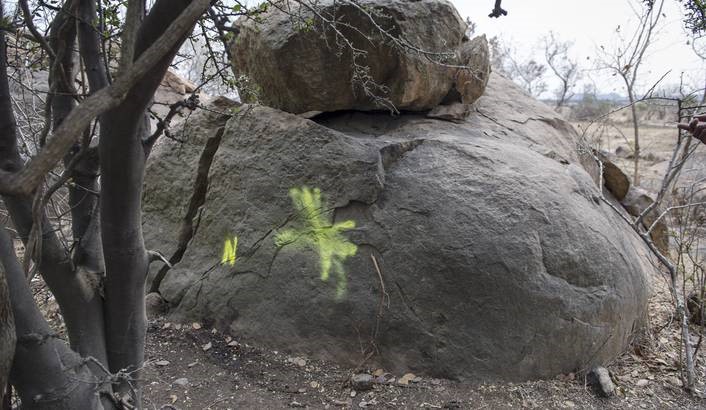
(Greg Marinovich)
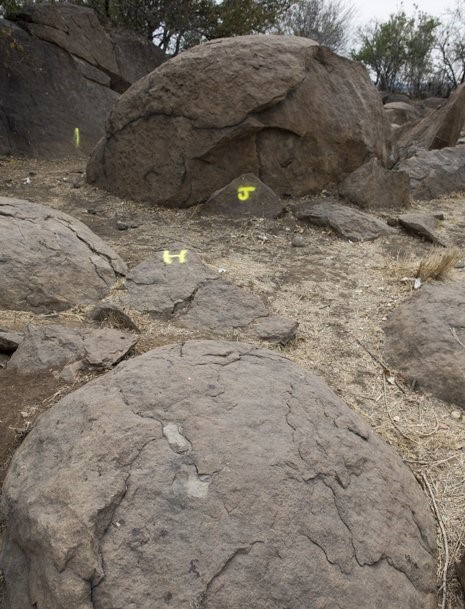
Photo: J and H died alongside each other (Greg Marinovich).
Other letters mark the rocks nearby. A bloody handprint stains a vertical rock surface where someone tried to support themselves standing up; many other rocks are splattered with blood as miners died on the afternoon of 16 August.
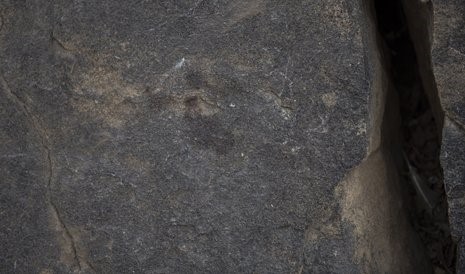
Photo: A bloody handprint stains a vertical rock surface (Greg Marinovich).
This combination of, one the one hand, evidentiary discrimination and the examination of clues, and, on the other, imaginative transport, brings to mind what is widely regarded to be the ur-text of true crime, In Cold Blood by Truman Capote. Capote’s book, which he himself described as a “nonfiction novel,” raises important questions about how nonfiction narratives draw energy not only from fictional techniques of storytelling, but also from fiction itself, that is from imaginative invention, for its paradoxical effect of truth-telling in story form. In a study of how to account for the “literariness” of a nonfiction work such as In Cold Blood, scholar Jerónimo Corregido writes:
We perceive In Cold Blood as a literary text in spite of its non-fictionality, then, because of the artful form in which it is created, because of the unconventional uses of the language, because of its innovative inner structure; all in all, because of the priom or literary procedure that was used to create the story. What lies in the center of the narrative is its creativeness, its deviation from the conventional. As Jakobson said, a text becomes literature when the language presents “an organized violence committed on ordinary speech” [Terry Eagleton]. The form in which a text is written determines its inclusion in the literary genre: it does not matter that the events narrated in In Cold Blood or in Recuerdos de provincia actually happened or not; what matters is that those events are told in a way that redefines ordinary objects and ordinary behaviours, that deviates from everyday language in order to “recover the sense of life, in order to feel objects, to make the stone stoney” [Victor Shklovsky], in order to deautomatise the perception of reality. (n.p.)
In an environment saturated with scandal fatigue and “automatized” apprehensions (the seeming sameness of political shenanigans, week in and week out), the importance of de-automatizing perceptions of reality by literary and artistic means – by writing, and photography, that redefine “ordinary objects and ordinary behaviours” – is of some importance. At least for the impassioned writer, that is, and Marinovich is nothing if not impassioned, devoting in excess of 2700 words and several carefully composed photographs to his piece, one among an unusually prolific series, for a news source that is reputed to pay its contributors very poorly, if at all. Marinovich is clearly not doing it for the money, but for the symbolic capital of dealing in a higher currency of truth, that most threatened coinage in postapartheid life. In doing this, Marinovich feels he needs to use unconventional and improvisational storytelling means, straining against the “news” shell in which he is writing, although the Daily Maverick is known for its “new journalism” style. (Writers like Richard Poplak, for example, are permitted entertaining indulgences of wayward and zanily energized expression, length and stylization of a kind that would not easily be swallowed by more conventional publications.) Marinovich seems aware that he needs to satisfy both the evidentiary demands of writing in the forensic, social detection mode, and yet make the “story” as grippingly convincing as possible. He wants, above all, for readers to see the truth behind what he regards as a prime instance of the grand postapartheid lie, in this case the police/state’s whitewashed version of what happened on 12 August 2012 at Marikana. So he zooms in, in both prose and photography, on the Rustenburg rocks among which many miners were killed, and the defiles these rocks define, recreating a sinister atmosphere of murderous entrapment. Marinovich’s marshaling of the available clues unavoidably conjures the scene of a trap set up by police in which a secluded space was secured in which to shoot the miners dead, at close range. In this telling, Marinovich’s writing makes the “stone stoney,” to paraphrase Shklovsky on the importance of defamiliarization or estrangement, by his intense and sustained literary focus on the igneous Rustenburg encrustations, and the doom that their indomitable fixture portended for the miners who were killed under their cover.
Further, Marinovich’s depiction of what happened amid these primitive stone structures, mute witnesses to what he insists are premeditated slayings, are driven by what Corregido, following linguist Teun van Dijk, calls “macropropositions” on the one hand, and “micropropositions” on the other. A macroproposition “represents the theme, or one of the themes, of a text … the global meaning of the discourse, at a semantic level of analysis” (n.p.); micropropositions, on the other hand, are “the details and characteristics which entail the macrostructures,” and they “cannot be classified as non-fictional,” some of them being “deliberately fictional” (n.p.). A briefer way of saying this would be that the factual macroproposition of a typical Marinovich piece introduces content with grave import and thematic truth, clearly written for the sake of the author’s conception of the public good, while the stylistic economy of rendering such larger truth borrows freely from fictional technique. One such technique is the use of focalization from the point of view of a particular human subject, in this case the reported and re-narrated evidence of eyewitnesses.
Marinovich first starkly exposes to public view what, he reminds us, was not shown in the generally transmitted footage of the shootings. “None of these events were witnessed by media or captured on camera. They were only reported on as component parts in the sum of the greater tragedy,” he writes, and then refines the perspective (further defamiliarizing the “known” events) by focalizing this hitherto “unknown” story via a witness:
One of the striking miners caught up in the mayhem, let’s call him “Themba”, though his name is known to the Daily Maverick, recalled what he saw once he escaped the killing fields around Wonderkop.
“Most people then called for us to get off the mountain, and as we were coming down, the shooting began. Most people who were shot near the kraal were trying to get into the settlement; the blood we saw is theirs. We ran in the other direction, as it was impossible now to make it through the bullets.
“We ran until we got to the meeting spot and watched the incidents at the koppie. Two helicopters landed; soldiers and police surrounded the area. We never saw anyone coming out of the koppie.” (“The Murder Fields of Marikana”)
This story is in stark contradiction to the police/state’s “muti-crazed” version of attacking mobs against whom they were compelled to defend themselves. Themba’s telling is uncomplicated, and it is rendered as such: “Most people who were shot near the kraal were trying to get into the settlement; the blood we saw is theirs. We ran in the other direction, as it was impossible now to make it through the bullets,” he states, with what appears to be self-evident logic. His rationality seems beyond doubt as he is represented as setting out, within the precise delimitation of semi-colons and periods, the pincer-like encroachment of police that he witnessed: “helicopters landed; soldiers and police surrounded the area. We never saw anyone coming out of the koppie.” Such are the micropropositions, undoubtedly stylized (as in fictionally rendered), but in support of a macroproposition that is fully committed to the truth as a non-negotiable, non-fungible asset:
It is becoming clear to this reporter that heavily armed police hunted down and killed the miners in cold blood. A minority were killed in the filmed event where police claim they acted in self-defence. The rest was murder on a massive scale. (“The Murder Fields of Marikana”)
Note the depersonalization of the truth-telling voice as “this reporter,” emphasizing the purported objectivity of his rendering. Marinovich then returns to a witness focalization, led in with an invocation of academic integrity in the matter of seeking out the truth:
Peter Alexander, chair in Social Change and professor of Sociology at the University of Johannesburg, and two researchers interviewed witnesses in the days after the massacre. Researcher Botsong Mmope spoke to a miner, Tsepo, on Monday 20 August. Tsepo (not his real name) witnessed some of the events that occurred off camera.
“Tsepo said many people had been killed at the small koppie and it had never been covered (by the media). He agreed to take us to the small koppie, because that is where many, many people died,” Mmope said.
After the shooting began, Tsepo said, he was among many who ran towards the small koppie. As the police chased them, someone among them said, “Let us lie down, comrades, they will not shoot us then.”
“At that time, there were bullets coming from a helicopter above them. Tsepo then lay down. A number of fellow strikers also lay down. He says he watched Nyalas driving over the prostrate, living miners,” Mmope said. “Other miners ran to the koppie, and that was where they were shot by police and the army** with machine guns.” (** Several witnesses and speakers at the miners' gathering referring to the army, or amajoni, actually refer to a police task team unit in camouflage uniforms and carrying R5 semi-automatic files on the day. – GM) (“The Murder Fields of Marikana”)
Marinovich reminds his readers that the police took several days before they released the number of the dead. “The number 34 surprised most of us,” he notes. “With only about a dozen bodies recorded by the media, where exactly had the remaining miners been killed, and how did they die?” He continues: “Most journalists and others did not interrogate this properly. The violence of the deaths we could see, again and again, was enough to contend with. The police certainly did not mention what happened outside of the view of the cameras.”
However, in service of the macroproposition of a greater, more encompassing truth, Marinovich insists on a higher power of observation than has been managed before in reporting on this event, and in general: “The toll of 112 mineworkers (34 dead and 78 wounded) at Marikana is one of those few bitter moments in our bloody history that has been captured by the unblinking eye of the lens. Several lenses, in fact, and from various viewpoints.” This, he proposes, “has allowed the actions and reactions of both the strikers and the police to be scrutinised in ways that undocumented tragedies can never be. Therefore, while the motives and rationale of both parties will never be completely clear, their deeds are quite apparent.” Having given academically validated and reliably witnessed micro-detail about what happened “on the ground,” under cover of the boulders, Marinovich returns to his macroproposition:
Thus developed a dominant narrative within the public discourse. The facts have been fed by the police, various state entities and by the media that the strikers provoked their own deaths by charging and shooting at the forces of law and order. Indeed, the various images and footage can be read to support this claim.
The contrary view is that the striking miners were trying to escape police rubber bullets and tear gas when they ran at the heavily armed police task team (our version of SWAT). The result was the horrific images of a dozen or so men gunned down in a fusillade of automatic fire. (“The Murder Fields of Marikana”)
Later in the story, Marinovich – having set out with great economy and elegant variation his story’s macro- and micropropsitions, feels emboldened to give the report more true crime flourish, in the service of a higher truth that the public good urgently requires to be told by whatever means will work best. And it is undoubtedly the chilling shock of imagining the scene as rendered below that serves such higher aims:
The yellow letters speak as if they are the voices of the dead. The position of the letters, denoting the remains of once sweating, panting, cursing, pleading men, tell a story of policemen hunting men like beasts. They tell of tens of murders at close range, in places hidden from the plain sight.
N, for example, died in a narrow redoubt surrounded on four sides by solid rock. His killer could not have been further than two meters from him – the geography forbids any other possibility. (“The Murder Fields of Marikana”)
Not content to leave the matter here, with an exposed murder scene, a previously secret matter and the subject of much prevarication by the police/state in their public representations of innocence, Marinovich continues, asking “why did this happen,” further analyzing the events of the previous few days, when strikers and police clashed, and several lives were lost. The energy of this onward-driven reporting is unusual and remarkable, especially in South African media. There is further witness rendering that casts doubt on police versions of events, a satellite photograph of the killing fields with its various “koppies,” an examination of Lonmin’s “corporate communication” on the event, and a detailed analysis of the weaponry used by police:
The weapons used by the majority of the more than 400 police on the scene were were R5 (a licensed replica of the Israeli Galil SAR) or LM5 assault rifles, designed for infantry and tactical police use. These weapons cannot fire rubber bullets. The police were clearly deployed in a military manner – to take lives, not to deflect possible riotous behaviour. (“The Murder Fields of Marikana”)
When Marinovich does begin to wind down this extraordinary marshaling of witnesses, macro- and micropropostions, novel-like stylistic turns and thumping true crime exposures (causing what Mark Seltzer calls “shock and excitation” in the face of torn and broken bodies, bared ignominiously for all to see in a media apriori, an awful reality wrap), he clearly feels he has earned the right to make some hard-hitting statements. “Let us be under no illusion,” Marinovich writes. “The striking miners are no angels,” he acknowledges, seeking to make sure no one can easily accuse him of unjustified bias in favour of the miners, before continuing thus:
They can be as violent as anyone else in our society. And in an inflamed setting such as at Marikana, probably more so. They are angry, disempowered, feel cheated and want more than a subsistence wage. Whatever the merits of their argument, and the crimes of some individuals among them, more than 3,000 people gathering at Wonderkop did not merit being vulnerable to summary and entirely arbitrary execution at the hands of a paramilitary police unit.
In light of this, we could look at the events of 16 August as the murder of 34 and the attempted murder of a further 78 who survived despite the police’s apparent intention to kill them.
Back at the rocks the locals dubbed Small Koppie, a wild pear flowers among the debris of the carnage and human excrement; a place of horror that has until now remained terra incognita to the public. It could also be the place where the Constitution of South Africa has been dealt a mortal blow. (“The Murder Fields of Marikana”)
Whether what Marinovich here concludes is true, and to what degree, is perhaps less immediately relevant to our purposes than the manner in which he has earned the right to say it. This might be described as a form of writing/representation that amalgamates personal observation, third-party witnessing, relentless factual discovery, unstinting evidentiary nous, a commitment to forms of representation that combine maximum communicative force, and improvisational, hybrid forms of writing, as well as photographic evidence. This communicative package borrows strongly from (and in fact instantiates many features of) what scholars call “creative nonfiction,” all the while acknowledging also the porousness of fiction and nonfiction. The “crime scene” or pathological public sphere in whose ominous shades postapartheid so often emerges into public view, seems insistently to require such modal innovations, and as scholars we should therefore adjust our lenses accordingly.
Endnotes
- The terms “pathological public sphere” and “wound culture” are derived from the work of Mark Seltzer in his studies True Crime: Observations on Media and Modernity; Serial Killers: Death and Life in America’s Wound Culture; and “Wound Culture: Trauma in the Pathological Public Sphere”, among others.
- The project is the work of senior reporter Niren Tolsi and photographer Paul Botes, in three sections. This digital production is the length of a modest book, with elegantly presented and styled text (decidedly “literary,” in lyrical vein, in some instances) on the event and on the aftermath of the killings for the families of those killed; the photographs and videos embedded in the project (which is open-ended and ongoing) deepen the experience of experiencing the production (“reading” would be too narrow a description).
- See “Farlam Commission hearing final arguments”; “Mr X denies being a police informer;” “Marikana: Mr X converts to Chrstianity”; “Mr X is lying, lawyers tell Marikana Commission”; “Marikana Commission: Mr X’s testimony collapses under cross-examination”.
- See, for example, the words of “Anele” (real name withheld by the Mail & Guardian to protect the witness), who is reported to have said: "August 16 [Marikana] reminds me of June 16," says Anele. "It was like a dream, maybe a nightmare, this failure by government and Lonmin" (Tolsi and Botes). See also Tolsi’s explicit comparisons with June 1976, Sharpeville and Bhisho.
- See Jamal, “Bullet through the Church”.
- Similarly, The Seed is Mine (1985) by Charles van Onselen must be counted as one of the great nonfiction epics of the struggle period, setting out in minutely detailed and meticulously micro-narrativized form the material and affective conditions of a single peasant sharecropper’s life lived under segregation and apartheid. The over-emphasis in South African literary-critical studies on the work of a single writer, J.M. Coetzee, is matched here by lack of attention to the importance of this work from a literary-critical point of view.
- The Wikipedia entry under Marinovich’s name provides a concise snapshot of his credentials: “Greg Sebastian Marinovich(born 1962) is a South African photojournalist, film maker, photo editor, and member of the Bang-Bang Club. He co-authored the book The Bang Bang Club: Snapshots from a Hidden War, which details South Africa's transition to democracy [turned into a Canadian-South African film production, The Bang-Bang Club, by Steven Silver in 2010]. In the 1990s, Marinovich worked as the chief photographer for the Associated Press in Israel/Palestine. He was awarded the Pullitzer Prize for Spot News Photography in 1991 for his coverage of African National Congress supporters brutally murdering a man they believed to be an Inkatha spy.He has also received a Leica Award and a Visa d’Or.”
Works Cited
Alexander, Peter, Thapelo Lekgowa, Botsang Mmope, Luke Sinwell, and Bongani Xezwi.
Marikana: Voices from South Africa’s Mining Massacre. Athens: Ohio University Press, 2013.
Corregido, Jerónimo. “A Study of Genre in ‘In Cold Blood’: A Formal Perspective”.
academia.edu. Academia.edu, n.d. Web, n.d.
Evans, Sarah, and Matuma Letsaola. “Ramaphosa Must Answer For ‘Premeditated’
Marikana Killings”. mg.co.za. Mail & Guardian, 18 December 2013. Web. n.d.
“Farlam Commission Hearing Final Arguments”. news24.com. News24, 5 November 2014. Web. n.d.
Gevisser, Mark. Thabo Mbeki: The Dream Deferred. Johannesburg: Jonathan Ball, 2007; New York: Farrar, Straus and Giroux, 2007.
Jamal, Ashraf. “Bullet through the Church: South African Literature in English and the Future-Anterior.” English Studies in Africa 53.1 (2010): 11-20.
Mandela, Nelson. Long Walk to Freedom. London: Little, Brown, 1995.
“Marikana: Mr X denies being a police informer”. mg.co.za. Mail & Guardian, 7 August 2014. Web. n.d.
“Marikana: Mr X Converts to Christianity”. mg.co.za. Mail & Guardian, 21 July 2014.
Web. n.d.
“Marikana Commission: Mr X’s Testimony Collapses Under Cross-examination”.
dailymaverick.co.za. Daily Maverick, 4 July 2014. Web. n.d.
Marinovich, Greg, and Greg Nicolson. “Marikana Massacre: SAPS, Lonmin, Ramaphosa &
time for blood. Miners' blood”. mg.co.za. Daily Maverick, 24 October 2013. Web. n.d.
Marinovich, Greg. “Marikana: Police Torturing Their Way To Intimidation”. dailymaverick.co.za. Daily Maverick, 2 November 2012. Web. n.d.
_____. “The Murder Fields of Marikana. The Cold Murder Fields of Marikana”.
dailymaverick.co.za. Daily Maverick, * September 2012. Web. n.d.
_____. “Marikana Commission: Man and his truth – a story of the policeman
who was not afraid.” dailymaverick.co.za. Daily Maverick, 15 May 2014. Web. n.d.
“Mr X is Lying, Lawyers Tell Marikana Commission”. timeslive.co.za. Sapa, 21 July 2014.
Web. n.d.
Seltzer, Mark. True Crime: Observations on Media and Modernity. New York: Routledge, 2007.
_____. Serial Killers: Death and Life in America’s Wound Culture. New York: Routledge: 1998.
_____. “Wound Culture: Trauma in the Pathological Public Sphere”. October 80 (1997):
3-26.
Susen, Simon. “Critical Notes of Habermas’s Theory of the Public Sphere”. Sociological
Analysis 5.1 (2011): 37-62.
Tolsi, Niren. “SAPS Rot Runs Deep in Marikana Cover-Up”. mg.co.za. Mail & Guardian, 2
July 2015. Web. n.d.
If you are seeking for attorney or lawyers who can assist you on your legal concern, then here's workers comp attorney Glendale CA that is willing to help you, give us a call today for more details.
 SLiPStellenbosch Literary Project
SLiPStellenbosch Literary Project 



